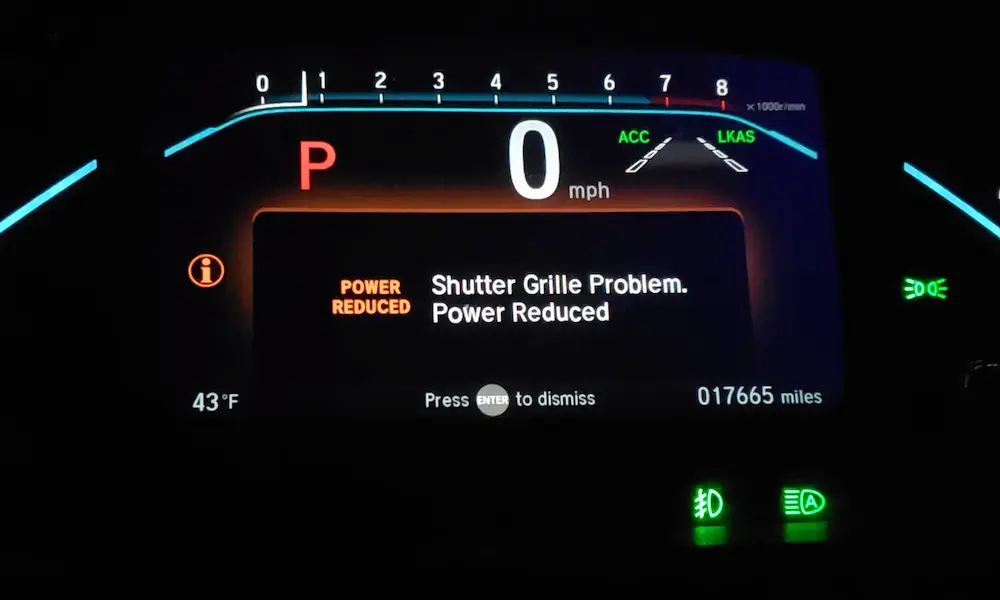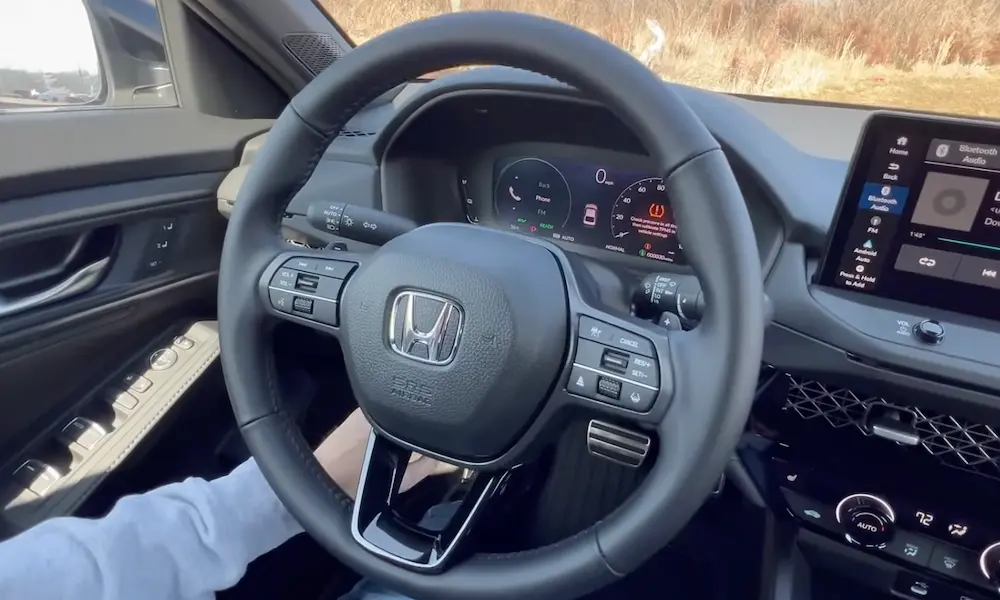Is your Honda Pilot’s alarm randomly blaring at inconvenient times? There’s nothing quite like the embarrassment of your car alarm shrieking at 3 AM in a quiet neighborhood or during an important meeting. This frustrating issue affects many Honda Pilot owners, but don’t worry—there are specific causes and solutions that can help you silence that annoying alarm for good.
Common Causes of Honda Pilot False Alarms
When your Honda Pilot alarm keeps going off without apparent reason, it’s typically due to one of several common culprits. Let’s examine each potential troublemaker.
Faulty Hood Latch Sensor
The hood latch sensor is the #1 suspect when your Honda Pilot alarm randomly activates. This small but crucial component detects whether your hood is properly closed. When it malfunctions due to corrosion or mechanical failure, it sends false signals to your security system.
Many Pilot owners report that simply disconnecting the sensor’s wiring harness near the hood latch stops the random alarms. The downside? You’ll get a persistent “hood open” dashboard warning. For a proper fix, you’ll need to clean the sensor contacts with rubbing alcohol or replace the entire latch assembly.
For 2016-2019 Pilots, you’ll likely need latch part 74120-TZ5-A03, which costs between $50-$150 if you’re doing it yourself.
Defective Door Jamb Switches
Door jamb switches monitor whether your doors are open or closed. When these switches fail—often due to moisture or wear—they can falsely indicate an open door, triggering your alarm.
To test if a door switch is the culprit:
- Open and close each door while watching your dome light
- If the light flickers or doesn’t respond consistently, you’ve found your problem
Replacement switches cost as little as $7-$50 depending on your Pilot’s trim level, making this one of the more affordable fixes.
Keyless Access Control Module Issues
The keyless access/TPMS control unit (typically part numbers 38320-T6Z-A11/A21/A31) is particularly vulnerable to internal circuit board corrosion, especially if you live in a humid climate.
This sophisticated module manages multiple security functions, and when it fails, your alarm can behave erratically. Honda’s Technical Service Bulletin 21-055 outlines how to diagnose this issue using the i-HDS system to check for ignition switch error codes.
Replacing this module is more complex and costly—between $600-$1,200 at a dealership—as it requires reprogramming all keys and TPMS sensors.
Electrical System Problems That Trigger Alarms
Your Honda Pilot’s alarm system doesn’t exist in isolation—it’s connected to the vehicle’s broader electrical network. When electrical issues arise, they can indirectly cause alarm malfunctions.
Battery Drain and Voltage Instability
A parasitic draw on your battery from malfunctioning components can destabilize your vehicle’s voltage, potentially triggering the alarm. Some owners report overnight battery depletion after disconnecting faulty hood sensors, suggesting an underlying electrical problem.
If your battery keeps dying alongside alarm issues, use a multimeter to check for unusual current draw after shutdown. Anything above 50mA indicates an electrical fault that needs addressing.
Software and ECU-Related Issues
Recent Honda Pilot models (2023-2025) have had recalls related to the fuel injection electronic control unit (FI-ECU). While primarily linked to engine stalling, these software issues can potentially affect security systems.
Honda dealers offer free software updates under recall numbers EL1/AL0. If your Pilot falls within these model years, check if it’s covered by verifying your VIN through Honda’s recall lookup portal.
How to Diagnose What’s Triggering Your Alarm
Before you can fix the problem, you need to identify the exact cause. Here are effective methods to diagnose your Pilot’s alarm issues.
Professional Diagnostic Methods
Authorized Honda dealers can retrieve your alarm’s trigger history using the Honda Diagnostic System (HDS). This specialized equipment can pinpoint the exact sensor or module causing the false activations.
For example:
- Code B1676 indicates a hood sensor failure
- Code B2109 points to problematic door switches
While professional diagnosis isn’t free, it can save you from replacing parts unnecessarily.
DIY Testing Techniques
If you prefer to troubleshoot yourself before heading to a mechanic, try these field tests:
Hood Sensor Test
- Lock your vehicle and watch the parking lights
- If they don’t flash or there’s no confirmation chirp, your hood sensor might be compromised
Door Switch Verification
Manually activate each door switch while watching the interior dome light. Inconsistent operation suggests a faulty switch.
Keyless Module Inspection
Located behind the glovebox, you can visually inspect this module for green corrosion deposits—a telltale sign of moisture damage.
Repair Options and Costs
Now that you’ve identified the likely culprit, let’s look at what repairs might cost and whether you can tackle them yourself.
Component Replacement Costs
| Component | Dealer Cost (Parts + Labor) | DIY Cost |
|---|---|---|
| Hood Latch Assembly | $300-$800 | $50-$150 |
| Door Jamb Switch | $120-$200 | $7-$15 |
| Keyless Control Unit | $600-$1,200 | Not Recommended for DIY |
DIY-Friendly Repairs
Some repairs are relatively straightforward for the mechanically inclined:
Hood Latch Sensor Replacement
- Disconnect the battery
- Remove the grille or underhood covers to access the latch
- Disconnect the electrical connector
- Unbolt the old latch assembly
- Install the new unit and reconnect
Door Switch Replacement
- Remove the door sill plate
- Locate the switch in the door jamb
- Disconnect the wiring harness
- Pop out the old switch and insert the new one
When Professional Help Is Needed
Complex issues involving the keyless access module or deeper electrical problems typically require professional assistance. The reprogramming needed for keyless modules requires specialized equipment that most DIYers don’t have access to.
For vehicles with active recalls, always visit an authorized Honda dealership for free repairs covered under warranty.
Quick Temporary Fixes
Need immediate relief while planning a proper repair? Try these temporary solutions:
Disconnecting Problem Sensors
For hood sensor issues, locate the yellow/orange wire connector near the hood latch and disconnect it. This prevents false triggers but will activate your “hood open” dashboard warning.
Disabling the Alarm Horn
Remove fuse #14 in the under-hood fuse box to silence the alarm horn while retaining other security functions. This won’t fix the underlying issue, but at least your neighbors won’t hate you while you work toward a permanent solution.
Preventing Future Alarm Issues
After fixing your current problem, take these steps to minimize future alarm headaches:
Regular Maintenance Tips
- Clean sensors and switch contacts periodically, especially if you live in a humid or salty environment
- Apply dielectric grease to electrical connectors to prevent moisture-related corrosion
- Have your battery and charging system tested annually to ensure stable voltage
Staying Updated on Honda Recalls
Regularly check for recalls affecting your Honda Pilot:
- Visit owners.honda.com/service-maintenance/recalls
- Enter your VIN to see if any active recalls might affect your alarm system
- Schedule necessary updates promptly
Real-World Examples
A 2017 Pilot owner experienced random alarms due to a failing hood latch sensor. After disconnecting the sensor temporarily, they noticed increased battery drain. Replacing the latch assembly for $210 solved both issues completely.
Another case involved a 2016 Pilot with humidity-induced keyless access module failure. The repair required complete module replacement and key reprogramming, costing nearly $800 at the dealership but permanently resolving the problem.
Understanding Your Honda Pilot’s Security System
The Honda Pilot’s security system is designed with multiple sensors working together to protect your vehicle. Understanding how it functions normally can help you identify abnormal behavior.
How It Should Work
When functioning correctly, your Honda Pilot’s security system:
- Activates when you lock the doors with the key fob
- Confirms activation with a brief horn chirp and/or flashing lights
- Monitors doors, hood, tailgate, and ignition for unauthorized entry
- Sounds the alarm only when genuine security breaches occur
The system relies on input from various sensors to determine whether to trigger the alarm. When these sensors provide incorrect information, false alarms result.
Technical Service Bulletins
Honda has issued several Technical Service Bulletins (TSBs) addressing alarm issues in various Pilot model years:
- TSB 21-055 covers keyless access control module failures
- Multiple TSBs address hood latch sensor problems, particularly in 2016-2019 models
These manufacturer-recognized issues confirm that you’re not alone in experiencing these problems.
Your Honda Pilot’s alarm system is meant to protect your vehicle, not cause headaches. By identifying the specific cause of false alarms and addressing it properly, you can restore your security system to its intended function and enjoy peaceful, interruption-free ownership of your Honda Pilot.














